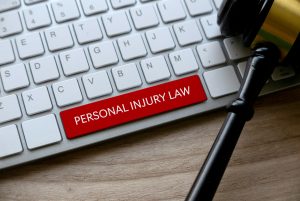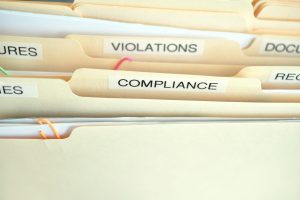The hours, days, weeks, and months after a car accident can be quite painful, stressful, and confusing. You may need to undergo surgery or physical therapy to recover from your injuries.
Either way, you may be forced to stay out of work and incur significant medical bills as a result of the accident. So, who is responsible for compensating you for your financial losses and emotional trauma?
In most cases, the at-fault driver in a car accident is financially responsible for any resulting damages and injuries. So, if you were hit by a driver who ran a red light, he/she could be on the hook for your medical bills, lost wages, and pain and suffering.
However, most drivers in the U.S. carry liability insurance to cover these costs in the event of an accident. So, if the at-fault motorist was insured, the process of recovering compensation will begin with filing a claim with the driver’s insurance company.
But, even if the other driver was insured, getting the insurance company to pay what you are rightfully owed can be a challenge. Here is everything you need to know about settling a personal injury claim with an insurer.
How Do Typical Personal Injury Settlements Work Out with Insurance?
Before we go into the specifics of settling your personal injury claim with an insurer, let’s first review how these settlements typically work out.
As mentioned earlier, if you were involved in a car accident caused by another driver, you will likely file a claim with the at-fault driver’s auto insurance company. Once the insurance company receives your claim, it will send out an insurance adjuster to investigate the accident.
The insurance adjuster will then review the evidence and determine who was at fault for the accident. If the insurance company finds that its insured driver was not at fault, your claim will likely be denied.

However, if the insurance company finds that its insured driver was at fault, it will begin the process of negotiating a settlement with you. The insurance company will consider things like your medical bills, lost wages, and pain and suffering when making its initial settlement offer.
It’s important to note that the insurance company’s goal is to settle your claim for as little money as possible. So, you should not expect it to give you a fair settlement offer right off the bat.
Instead, you will likely have to counter the insurance company’s initial settlement offer before reaching an agreement on a final settlement amount.
How to Settle a Claim with the At-Fault Driver’s Insurance Company
If you were involved in a car accident caused by another driver, you will likely file a claim with the at-fault driver’s auto insurance company. Follow the steps outlined below to get the rightful compensation you deserve.
Step 1: Report the Accident or Injury
The first thing you need to do is notify the insurance company of the car accident or injury. In most cases, you will find the other motorists’ insurance information on the police report or accident report.
When filing a claim, make sure you write down all the information provided by the insurer, including the insurance adjuster’s name, phone number, and claim number.

The time you have to notify the insurance company of the accident varies. However, it is always good to report the accident as soon as possible. This is because, in some cases, the insurance company may deny your claim if you wait too long to notify them.
Be prepared to provide information about the incident when you contact the insurance company. The most critical information you need includes your name and contact information, the exact date and time of the car accident, and a brief description of any injuries or property damage you suffered.
Step 2: Gather Evidence and Documentation
The next step is to gather all the evidence and documentation related to your car accident or injury. This will help support your claim and ensure that you get the maximum amount of compensation you deserve.
Some of the evidence and documentation you will need to gather include:
- Police reports
- Accident reports
- Medical records and bills
- Proof of lost wages (e.g., pay stubs or tax returns)
- Photos or videos of the accident scene and your injuries
Step 3: Determine the Value of Your Claim
You may eligible for compensation for both economic and non-economic damages. Generally, the damages in your car accident case will depend on the specific facts surrounding your case.
Some of the common damages in car accident claims include but are not limited to medical bills, lost wages, loss of consortium, property damage, loss of enjoyment of life, emotional trauma, scarring and disfigurement, disabilities, and pain and suffering.
You will need to calculate the value of your claim by adding up all the economic damages you suffered plus any non-economic damages (such as pain and suffering).
While calculating the value of your economic damages is pretty simple, calculating the value of your non-economic damages can be more difficult.

One way to calculate the value of your non-economic damages is to multiply your economic damages by a number between 1.5 and 5, depending on the severity of your injuries.
For example, if you have suffered $10,000 in economic damages and suffer from mild pain and suffering, you could multiply your economic damages by 2 to get a rough estimate of the value of your claim.
This would give you a total claim value of $20,000.
Another way to calculate the value of your non-economic damages is to think about how much money you would want to suffer through the pain and suffering you endured.
Once you have calculated the total value of your claim, you will be in a better position to negotiate with the insurance company.
Step 4: Make a Demand for Payment
Once you have gathered all the evidence and calculated the value of your claim, make a written demand for payment to the at-fault driver’s insurance company.
In your demand letter, you will need to include all the evidence and documentation you gathered in step two and a detailed description of all the damages you suffered.
You will also need to include a specific dollar amount that you are demanding for your car accident claim.
If you are not sure how much to ask for, you can use our personal injury settlement calculator to get an estimate of the value of your case.
Step 5: Wait for the Insurance Company’s Response
The insurance company will take some time to review your demand letter and investigate your claim.
Once they have finished their investigation, they will make a settlement offer.
The settlement offer will likely be much lower than what you demanded in your letter.
At this point, you can either accept the insurance company’s offer or continue to negotiate for a higher amount.

Keep in mind that the insurance company will always make a lowball offer in an attempt to settle your claim for as little money as possible.
Therefore, you mustn’t accept the first offer the insurance company makes. Instead, counter their offer with a higher amount and be prepared to negotiate until you reach an agreement.
Step 6: Submit Counteroffer
If you don’t accept the insurance company’s first offer, you will need to make a counteroffer.
Your counteroffer should be based on the evidence and documentation you gathered in step two, as well as the value of your claim that you calculated in step three.
It is important to remember that you should never accept the insurance company’s first offer. Instead, you should always make a counteroffer in an attempt to get the insurance company to increase their offer.
Step 7: Review Settlement Offer and Agree to Terms
Once you and the insurance company have reached an agreement, the insurance company will send you a settlement check for the agreed-upon amount.
It is important to review the settlement offer carefully before agreeing to it.
Ensure that the offer includes all the damages you are claiming and that you are comfortable with the amount of money being offered.

Once you have reviewed and agreed to the terms of the settlement offer, you will need to sign a release form to receive the settlement check.
The release form will state that you agree to the settlement terms and that you will not file a lawsuit against the insurance company or the at-fault driver for any damages related to the car accident.
Step 8: Cash Settlement Check
After you have signed the release form, the insurance company will send you a settlement check for the agreed-upon amount.
Once you receive the check, cash it and use the money to pay for all the damages you suffered as a result of the car accident. These damages can include medical bills, property damage, lost wages, etc.
Final Thoughts
If you have been injured in an accident, it is important to understand how the personal injury settlement process works.
By following these steps, you can ensure that you receive a fair settlement for your damages.
Keep in mind that every case is different, and you may need to seek legal assistance if you cannot reach a settlement with the insurance company on your own. Thanks for reading!

